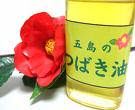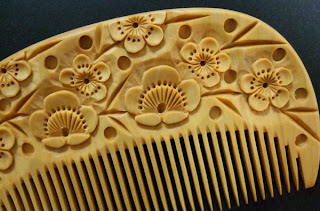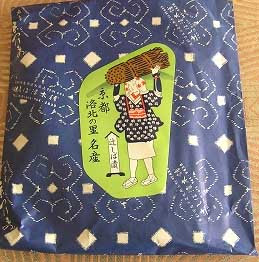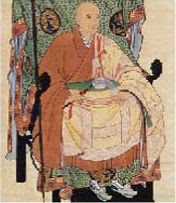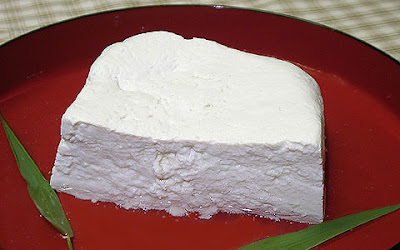[ . BACK to WORLDKIGO TOP . ]
::::::::::::::::::::::::::::::::::::::::::::::::::::::::::::::::::::::::::::::::::::::::::::::::::::
Egg (tamago, ran)
***** Location: Japan
***** Season: See below
***** Category: Humanity
*****************************
Explanation
kantamago, kan tamago 寒卵 (かんたまご)
eggs layed in the cold season
..... kan tamago 寒玉子(かんたまご)winter eggs
kigo for early winter
They are known to be especially nutritious and healthy.
rice gruel with eggs, tamago zoosui
卵雑炊(たまごぞうすい)
kigo for all winter
:::::::::::::::::::::::::::::::::::::::::::::::::::::::::::::::::::::::::::::::::::::::::::::::::::::
onsen tamago 温泉卵 。おんせんたまご eggs boiled in hot springs
Thanks to the vulcanic acitvities we have the natural hot water from the many onsen, the hot springs. This water is also used for cooking. Vegetables in a sack are put into the boiling water until they are done.
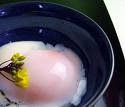
Many regions also sell eggs boiled in hot spring water", onsen tamago, as a local speciality. The yellow inside has a half-boiled quality, which is especially favored. Because of the sulfuric compounds of some hot springs these eggs get a black shell in the process.
Nowadays there are also machines on sale to prepare these half-boiled eggs at home.
:::::::::::::::::::::::::::::::::::::::::::::::::::::::::::::::::::::::::::::::::::::::::::::::::::::
Egg specialities of Edo
 Rikyuu tamago 利休卵 eggs a la Rikyu
Rikyuu tamago 利休卵 eggs a la Rikyu
kurumi tamago 胡桃卵 walnut eggs
Edo Tamago Hyakuchin 卵百珍
100 specialities with Eggs

黄身返しのたまご the yoke outside, the egg white inside
a special preparation of fertilized egge, kept in miso paste for a few days, then hard-boiled.
List of 100 names with furigana !
source : takakis2
. WASHOKU --MORE : Favorite Egg Dishes from Edo
tamagouri, tamago uri 玉子売り / 卵売り vendor of eggs
In Edo, raw eggs and boiled eggs were sold by street vendors. The boiled eggs were a favorite of the visitors to the Yoshiwara pleasure quarters. They eat them to gain strength before their visit to the ladies.
The vendors called out twice "raw eggs, raw eggs" or "boiled eggs, boiled eggs" to be heared clearly. Calling out three times was not done and was ridiculed in senryu of the times.
To show the freshness of raw eggs, the vendors would hold them in the hand toward the sun and make sure they are kind of transparent.
吉原を四方に歩く玉子売り
Yoshiwara o shihoo ni aruku tamago-uri
they walk around
the four corners of Yoshiwara
boiled egg vendors
 source : page.freett.com/honeythehaniwa
. Doing Business in Edo - 江戸の商売 .
. Yoshiwara 吉原 pleasure quarters .
source : page.freett.com/honeythehaniwa
. Doing Business in Edo - 江戸の商売 .
. Yoshiwara 吉原 pleasure quarters .
:::::::::::::::::::::::::::::::::::::::::::::::::::::::::::::::::::::::::::::::::::::::::::::::::::::
Hardboiled eggs from Hakone Hot Spring
Onsen Tamago 温泉卵
 (C) More in the WIKIPEDIA !
MY ONSEN 温泉 . おんせん
(C) More in the WIKIPEDIA !
MY ONSEN 温泉 . おんせん Hot Springs of Japan
:::::::::::::::::::::::::::::::::::::::::::::::::::::::::::::::::::::::::::::::::::::::::::::::::::
Tamagokake gohan TKG 卵かけご飯 / 卵掛けご飯
boiled rice with raw egg
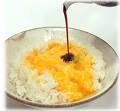
There are different kinds of soy sauce to poor over your dish.
A bit of chopped chives or other green leavfy vegetables are added for flavor.
This is a ceap local speciality rather popular these days. There are even stalls who sell this dish at our local festival in Misakicho, Okayama prefecture.
美咲町たまごかけごはん, 岡山県
里山の恵み!夫婦合作の卵かけご飯~岡山県 美咲町
生中継 ふるさと一番! NHK
9月16日(水)

Tamago Egg and Rice from my town, Misakicho !
:::::::::::::::::::::::::::::::::::::::::::::::::::::::::::::::::::::::::::::::::::::::::::::::::::
Nama tamago 生卵 raw eggs
They are still safe to eat here in Japan and are thought of as a booster to your energy.
The meat and other ingredients of sukiyaki are dippen in a raw egg before eating.
They are also serven on top of noodle soups.
:::::::::::::::::::::::::::::::::::::::::::::::::::::::::::::::::::::::::::::::::::::::::::::::::::
dashimaki tamago 出し巻き卵 rolled egg omelet
rolled omelette
dashimaki 出し巻き/ だし巻き/ 出汁巻き
mit Dashi zubereitetes japanisches Omelett
. . . CLICK here for Photos !
:::::::::::::::::::::::::::::::::::::::::::::::::::::::::::::::::::::::::::::::::::::::::::::::::::
Datemaki だてまき sweet rolled omelet
with fish hanpen or shrimp paste, some count it as a form of KAMABOKO.
Named after Date Masamune, Daimyo of Sendai
Dish for the New Year
With a bamboo wrapper (take sudare) it is rolled to show the form of the character NO の 。
http://japanesefood.about.com/od/egg/r/datemaki.htm
 Datemaki with Royal Jelly
New Year 2009
Date Masamune 伊達政宗
Datemaki with Royal Jelly
New Year 2009
Date Masamune 伊達政宗 (1567 - 1636)
:::::::::::::::::::::::::::::::::::::::::::::::::::::::::::::::::::::::::::::::::::::::::::::::::::
chawanmushi 茶わん蒸し/ 茶わんむし/茶碗蒸し
"tea cup steam" "steamed in a tea bowl"
egg custard
. . . CLICK here for Photos !
Sometimes udon noodles are added.
odamaki 苧環蒸(おだまきむ)し」
odamaki mushi おだまき蒸し / odamaki udon
gedämpfter Eierstich m (mit Sojasoße, Pilzen, Dreiblätterkraut u.a.).
:::::::::::::::::::::::::::::::::::::::::::::::::::::::::::::::::::::::::::::::::::::::::::::::::::
nikoniko tamago ニコニコ卵 eggs with two yolks
(can also read " smiling eggs" (niko niko)
 From Misakicho Town, Okayama pref.
From Misakicho Town, Okayama pref.
nishoku tamago 二色卵 (にしょくたまご )
egg with two colors

::::::::::::::::::::::::::::::::::::::::::::::::::::::::::::::::::::::::::::::::::::::::::::::::::::
iri-tamago, iritamago いりたまご (煎り卵)
scrambled eggs, finely scrambled and used as toppings to add color to a bento.
tamago soboro たまごそぼろ
. . . CLICK here for Photos !
::::::::::::::::::::::::::::::::::::::::::::::::::::::::::::::::::::::::::::::::::::::::::::::::::::
omuraisu オムライス omelette with rice
a dish served in western-style restaurants
. . . CLICK here for Photos !
Reisomelett,mit Reis gefülltes Omelett
Reference
omusoba オムソバ omelette with Chinese fried soba noodles
the noodles are wrapped in a thin omelette and ketchup is used for decoration.
. . . CLICK here for Photos !
Reference
:::::::::::::::::::::::::::::::::::::::::::::::::::::::::::::::::::::::::::::::::::::::::::::::::::::
tamagozake, tamago sake 卵酒 ricewine with egg
a drink to help you get over a cold.
. . . CLICK here for Photos !
:::::::::::::::::::::::::::::::::::::::::::::::::::::::::::::::::::::::::::::::::::::::::::::::::::::
yamabuki kamaboko やまぶきかまぼこ
kamaboko fish paste colored yellow with an egg yolk
. Yamabuki - Yellow dishes of Edo
:::::::::::::::::::::::::::::::::::::::::::::::::::::::::::::::::::::::::::::::::::::::::::::::::::::
Eggs as offerings to the deities
生卵を奉納するお祭 Offering raw eggs Festival
at Zeniarai Benten, Kamakura on the first day of the snake in the new year.
巳の神様
Benten is related to the God of Snakes and Serpents, and the favorite food of this animal are eggs. So at the shops around Zeniarai Benten they sell boiled eggs as offerings, to have your wish come true.
弁天卵(ゆで卵)Benten Yudetamago
"Benten Boiled Eggs" are served at some Benten shrines on the evening of December 31, then people line up to ring the bell into the New Year.
quote
Uga Benzaiten, a deity of good fortune and wealth. Most sources believe Ugajin is none other than
Uga no Mitama, the Shinto goddess of foodstuffs mentioned in Kojiki and Nihongi, two of Japan's earliest records. Uga no Mitama is also commonly identified with a male counterpart named Uka no Mitama, the deity of grains. This Shinto pair are further identified with Inari, the parent Shinto god/goddess of rice and agriculture, who is identified with a white fox as his/her messenger.
Benzaiten / Mark Schumacher
. WASHOKU
Benten, Benzaiten 弁天 弁財天 and food
keiran けいらん鶏卵 eggs from chicken
Hühnereier
:::::::::::::::::::::::::::::::::::::::::::::::::::::::::::::::::::::::::::::::::::::::::::::::::::::
Other types of eggs
WASHOKU :
quails eggs ウズラの卵 / うずらの卵 uzura no tamago
ahiru no tamago アヒルの卵 ducks eggs
アヒルの卵料理
Anas platyrhynchos var. domestica.
. . . CLICK here for Photos !
Enteneier
kamo no tamago 鴨の卵 wild ducks eggs
. . . CLICK here for Photos !
Wildenteneier
dachoo no tamago ダチョウの卵 ostrich eggs
ダチョウの卵料理
There are some ostrich farms in Japan since 1988 which serve food with the eggs, huge omelettes for example.
They also serve the meat for grilling and hamburgers. Children can enjoy a ride on the ostrich too.
Ostrich farms in Japan
Ibaraki, Ishioka town
茨城県石岡市鹿の子2-3-22 ダチョウ王国石岡ファーム
Dachoo Bokujo Namikiya, Saitama prefecture
だちょう牧場
Oku Aso Greenfields
奥阿蘇ダチョウ牧場 グリーンフィールド
Ostrich Farm in Okinawa
Ostrich Farm in Yubara, Okayama
. . . CLICK here for Egg dishes Photos !
Straußeneier, Strausseneier, Straussenfarmen
Oystrich
:::::::::::::::::::::::::::::::::::::::::::::::::::::::::::::::::::::::::::::::::::::::::::::::::::::
stamping the date on eggs with laser
Each egg is individually stamped with a small date.
Laser dating of eggs is rather new. Before that, it used to be done with ink, for example in Europe.
It is useful for food items that can be kept outside the original packing carton (like eggs in a fridge egg shelf), so you can still know the date when to use it. Egg farmers with a large number of eggs being packed every day can afford this equipment.
This dating technology can also be used on other food items. Some clever agents even suggest to use it for advertisements.
::::::::::::::::::::::::::::::::::::::::::::::::::::::::::::::::::::::::::::::::::::::::::::::::::::
burando tamago ブランド卵
eggs with special brand names
first produced by small farms for the neighbourhood, later sold at supermarkets. They can sell up to more than 100% more than the normal prize of eggs. In 2009 there are more than 600 different types of regional eggs available.
mezamashitamago めざましたまご
"wake up" eggs for breakfast
. . . CLICK here for Photos !
kenkoo tamago 健康卵 eggs for your health
bio-eggs to be eaten raw on rice or used for dishes.
. . . CLICK here for Photos !
shintamago しんたまご"new eggs"
. . . CLICK here for Photos !
http://www.yomiuri.co.jp/gourmet/news/20080626gr03.htm
*****************************
Worldwide use
Ei, Eierspeise, Rührei, Omelett, Frühstücksei, Spiegelei
. Easter Egg, Osterei .
iisutaa eggu イースターエッグ Easter egg
sometamago 染卵(そめたまご)colored egg
.... irotamago, iro tamago 彩卵(いろたまご)
:::::::::::::::::::::::::::::::::::::::::::::::::::::::::::::::::::::::::::::::::::::::::::::::::::::::::::::::::::::::::::
Das Ei in Japan
Ohne weiteren Zusatz bezieht sich der Begriff Ei (Tamago) auf das Hühnerei. Aber auch Eier von anderen Vogelarten werden in Japan verspeist, beispielsweise Wachteleier oder neuerdings auch Straußeneier. Hühnereier sind aufgrund ihrer Nahrhaftigkeit wichtiger Bestandteil der Krankenkost. Im Winter gelegten Eiern wird dabei in Japan eine besondere Wirkkraft nachgesagt.
Handelsübliche weiße Eier von Hennen der Leghorn-Rasse werden in den Größen SS (mindestens 40–46 g), S (46–52 g), MS (52–58 g), M (58–64 g), L (64–70 g) und LL (70–76 g und mehr) angeboten, die Verkaufskartons sind entsprechend mit einem Aufkleber in verschiedenen Farben markiert: die kleinsten in Hellbraun und die großen LL-Eier in Rot.
Neben weißen gibt es auch die rotbraunen Eier in verschiedenen Farbschattierungen und Handelsklassen. Die Eier selbst müssen keinerlei Kennzeichnung zur Herkunft tragen, lediglich das Mindesthaltbarkeitsdatum muss angegeben sein. Es genügt ein Laserabdruck auf jedem Ei, ein beigelegter Zettel, der aufgrund der durchsichtigen Plastikverpackung meistens gut sichtbar ist, oder ein Stempel auf der Verpackung. Einige Anbieter drucken neben dem Haltbarkeitsdatum auch das Verpackungsdatum auf einen Beipackzettel.
Neben den herkömmlichen Eiern werden auch bis zu 600 Sorten von besonderen Marken-Eiern unter dem Namen
Burando Tamago angeboten. Ursprünglich waren dies Eier von kleinen Bauernhöfen, die nur in geringen Mengen an die Kunden in der Umgebung verkauft wurden. Mittlerweile werden sie auch in Supermärkten vertrieben, wobei der Preis je nach Stallbedingungen und Futter bis zu 100 % über dem normalen Eierpreis liegen kann.
Unter der Bezeichnung "
Bio-Eier für die Gesundheit" werden befruchtete Eier zu besonders hohen Preisen verkauft. Zehn Eier können dabei bis zu 700 YEN (entspricht ca. sechs Euro, Stand 2009) kosten. Diese Eier eignen sich für den rohen Genuss, Salmonellen stellen in Japan kein Problem dar.
Da die Hühner freilaufend gehalten werden, können die Eier in einer Packung unterschiedlich groß sein.
Der Regionalfürst von Sendai,
Date Masamune (1567–1636), war nicht nur für seine auffällige Kleidung bekannt, sondern auch ein Freund einer speziellen Eierspeise, die bald seinen Namen erhalten sollte. Zum Neujahrsfest, dem wichtigsten Feiertag in Japan, wird eine besondere Eierspeise serviert:
Datemaki. Hierbei handelt es sich um ein leicht gesüßtes, gerolltes Omelett mit Fisch- oder Garnelenpaste. Zum Neujahrsfest verbindet sich damit der Wunsch nach vielen glücklichen Tagen im kommenden Jahr.
Auch das "
Zweifarben-Ei" ist ein Neujahrsgericht, es wird jedoch auch bei anderen Familienfesten angeboten. Bei diesem Gericht werden Eiweiß und Eigelb getrennt, um dann wieder übereinandergeschichtet zu werden.
Rohe Eier spielen eine besondere Rolle in der japanischen Küche. Zum Frühstück beispielsweise wird über den gekochten Reis gern ein rohes Ei geschlagen und mit Reis und einem kleinen Noriblatt gegessen. In West-Japan wird bei vielen lokalen Festen "Reis mit rohem Ei" verspeist. Dies ist ein schlichtes, aber köstliches Mahl, bei dem die frischen Eier der Gegend mit Sojasauce vermischt auf den Reis gegeben werden. Auch das beliebte Gericht Sukiyaki ist nur mit einem rohen Ei vollkommen. Das gebratene Fleisch wird direkt aus dem Topf ins verquirlte Ei gegeben, so wird es leicht abgekühlt und man verbrennt sich nicht den Mund.
Ein großes kulinarisches Vergnügen auf Reisen durch die Vulkanregionen Japans sind die "
Eier der heißen Quellen" (onsen tamago). Sie werden in Bambuskörben in die heißen Schwefelquellen gehängt und bei 65–70°C etwa 30 Minuten gegart, oder so lange, bis das Eigelb halbweich ist. Eine Besonderheit dieser Zubereitungsart ist, dass sich dabei die Schalen durch den Schwefelgehalt des Wassers meistens schwarz färben.
Bei den
Dashimaki – ein elementarer Bestandteil einer Sushi-Platte – bestimmt die Art der Dashi den Geschmack des Omeletts. Viele Hausfrauen und Restaurants haben ihr eigenes Dashi-Rezept. Dashimaki ist für viele Japaner das letzte Stück eines Sushi-Mahls, mit dem sie sich eine abschließende Meinung über die Qualität des Restaurants bilden.
Im Herbst und Winter ist der Gedämpfte Eierstich
Chawanmushi besonders beliebt. Als Einlagen werden Pilze, Garnelen, Hähnchenstückchen, grüne Erbsen, Mitsuba, Gingkonüsse und anderes verwendet, beim Odamakimushi werden sogar Udon-Nudeln mitgekocht.
- - -Wachtel- und Straußeneier
Die japanische Wachtel wurde bereits um 1000 n. Chr. in Gedichten besungen, weil sich ihr Ruf für japanische Ohren anhört wie gokitchō, ein glückverheißendes Omen. Das Fleisch wurde seltener gegessen, aber die Eier waren eine beliebte Speise zur Belebung der Manneskraft. Heute werden die meisten Wachteln (bis zu 70 %) in der Präfektur Aichi gezüchtet.
Wachteleier enthalten mehr Vitamine, Mineralien und essentielle Aminosäuren als Hühnereier. In Japan werden Wachtel-Eier
uzura no tamago für Nudelsuppen oder Misosuppen, als Beilage zum Salat, für Curryreis oder andere Reisspeisen verwendet. Auch an Spießen mit Salz bestreut oder ausgebacken sind sie ein beliebter Snack.
Seit 1988 gibt es auch in Japan Straußenfarmen. Sie sind in erster Linie Touristenattraktionen und bieten Neugierigen die Gelegenheit, auf den großen Vögeln zu reiten. Zusätzlich werden Fleisch und Eier zum Grillen und Braten verkauft. Die wichtigsten Straußenfarmen auf der japanischen Hauptinsel Honshu sind in Präfekturen um Tokyo, auf der südlichen Insel Kyūshū am Vulkan Asosan und auf Okinawa. Allerdings stellt der Verzehr von Straußeneiern eine kleine Herausforderung dar: Die 2–3 mm dicke Schale ist äußerst stabil – ein Erwachsener kann auf einem Straußenei stehen – und lässt sich nur mit Werkzeug öffnen. Der Inhalt eines Straußeneis entspricht dem von 12 Hühnereiern. Gern wird daraus ein Omelett zubereitet.
:::::::::::::::::::::::::::::::::::::::::::::::::::::::::::::::::::::::::::::::::::::::::::::::::::::::::::::::::::::::::::
 In Old Singapore
In Old Singapore
I used to love Thousand Year Eggs
So long as they were fresh
- Shared byRes John Burman -
Joys of Japan, September 2012
Century egg or pidan (Chinese: 皮蛋; pinyin: pídàn),
also known as preserved egg, hundred-year egg,
thousand-year egg, thousand-year-old egg, and millennium egg, is a Chinese cuisine ingredient made by preserving duck, chicken or quail eggs in a mixture of clay, ash, salt, lime, and rice hulls for several weeks to several months, depending on the method of processing.
© More in the WIKIPEDIA !
*****************************
Things found on the way

and not to forget ...
the worldfamous egg toy .. ...
Tamagochi, Tamagotchi ! たまごっち
. . . CLICK here for Photos !
Tamago ... 卵だるま, たまごだるま, タマゴダルマ
Eggs and Daruma
*****************************
HAIKU
寒卵わが晩年も母が欲し
kan tamago waga bannen mo haha ga hoshi
in my old age
I long for a mother -
winter eggs
Nozawa Setsuko 野澤節子
:::::::::::::::::::::::::::::::::::::::::::::::::::::::::::::::::::::::::::::::::::::::::::::::::::::
寒卵掌にたしかめるわが命
kan tamagao shoo ni tashikameru waga inochi
winter eggs -
in the palm of my hand
I check my life
Shibata Toshiroo 柴田午朗
::::::::::::::::::::::::::::::::::::::::::::::::::::::::::::::::::::::::::::::::::::::::::::::::::::
 you can't make a Hamlet
you can't make a Hamlet
without cracking
some yokes
.
3 eggs
2 wearing chicken shit and straw
the other a feather
- Shared by Donall Dempsey -
Joys of Japan, 2012
:::::::::::::::::::::::::::::::::::::::::::::::::::::::::::::::::::::::::::::::::::::::::::::::::::::::
茹卵まだあたたかし後の月
yudetamago mada atatakashi nochi no tsuki
a boiled egg
still warm
the later full moon
Mogi Renyoshi 茂木連葉子
“nochi no tsuki” (literal translation ‘later moon’)
is the full moon on lunar September 13 (current mid-October). Ancient Japanese enjoyed the moon-viewing on lunar August 15 (current mid-September) and the full moon a month on lunar September 13.
Tr. Fay Aoyagi
*****************************
Related words
. Egg Festival たまごまつり
Tamago Matsuri
*****
WASHOKU : INGREDIENTS
:::::::::::::::::::::::::::::::::::::::::::::::::::::::::::::::::::::::::::::::::::::::::::::::::::
